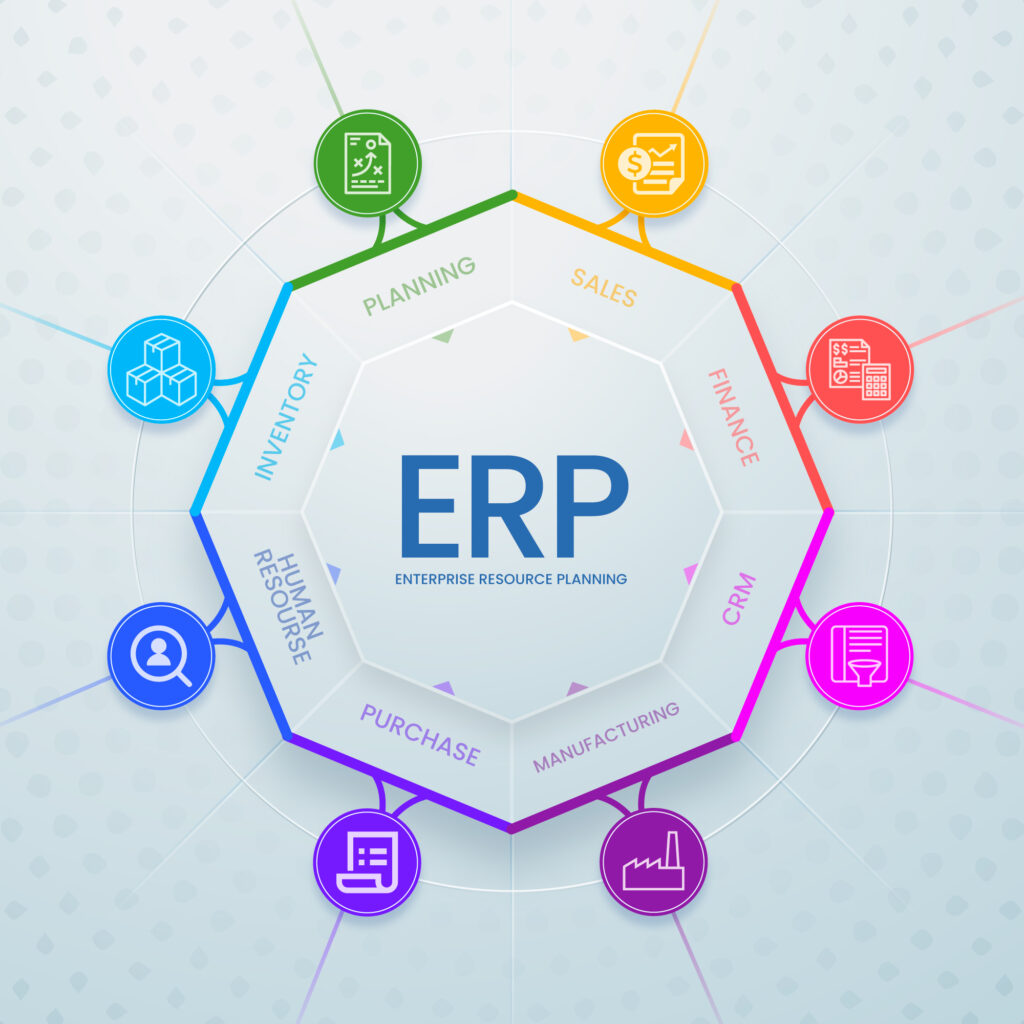
🏗️ Introduction to ERP System Integration
Enterprise Resource Planning (ERP) system integration is like putting all your puzzle pieces together—data, departments, and processes—into one clear picture. It’s not just a tech upgrade; it’s a business transformation. By syncing everything from inventory and HR to customer data and accounting, ERP integration breaks down silos and builds bridges between departments.
But how do you do it right? And why should you even bother? Let’s dive in. 👇
🔍 Why ERP Integration Matters in Modern Business
Today’s businesses deal with countless applications and platforms. Without integration, your operations become a patchwork of disconnected systems.
Here’s why ERP integration is a game-changer:
- Centralized Data: No more juggling multiple platforms.
- Better Customer Experiences: Everything’s connected for smoother service.
- Faster Decision Making: Real-time insights empower leaders.
- Cost Efficiency: Reduced manual work means lower costs.
🌟 Core Benefits of ERP Integration
✅ Improved Data Accuracy
No more duplicate entries or version control nightmares. A centralized ERP ensures all departments see the same data, improving transparency and trust.
⚙️ Enhanced Operational Efficiency
ERP integration cuts down manual processes, saving time and reducing errors. Your team can focus more on strategy and less on grunt work.
🧠 Streamlined Decision-Making
Real-time reports and dashboards enable smarter decisions. Leadership gets a holistic view of performance across departments.
🧩 Key Components of an ERP System
Before integrating, understand what makes up an ERP:
- Finance & Accounting
- Human Resources
- Inventory Management
- Customer Relationship Management (CRM)
- Supply Chain & Logistics
- Production/Manufacturing Management
All these need to connect smoothly for full integration.
🔄 Types of ERP Integrations
ERP systems aren’t one-size-fits-all. Let’s explore your options:
🏢 On-Premise ERP Integrations
Ideal for companies with in-house servers. Offers full control but higher maintenance.
☁️ Cloud-Based ERP Integrations
Hosted on the cloud. Great for scalability and cost-effectiveness. Examples: NetSuite, SAP Business ByDesign.
🔗 Hybrid ERP Models
Best of both worlds. You can keep sensitive data in-house and still enjoy cloud flexibility.
🧰 Popular Tools and Platforms for ERP Integration
- MuleSoft
- Dell Boomi
- Zapier (for small businesses)
- Oracle Integration Cloud
- Microsoft Power Automate
- Jitterbit
Each tool has unique features, but all aim to connect and automate workflows between ERP systems and other software.
Steps to Successfully Integrate ERP Systems
Step 1: Assess Business Needs
List your challenges and goals. What do you want ERP to solve?
Step 2: Choose the Right ERP Solution
Pick a scalable system that fits your industry and budget.
Step 3: Map and Clean Data
Old data = old problems. Clean your data before integration.
Step 4: Develop an Integration Plan
Set timelines, assign roles, and identify KPIs.
Step 5: Test, Monitor, and Optimize
Continuous improvement is key. Monitor system performance post-integration.
🚧 Common Challenges and How to Overcome Them
- Resistance to Change: Offer training and clear communication.
- Data Migration Issues: Always clean data before migrating.
- Integration Complexity: Use middleware or APIs to bridge gaps.
💡 ERP Integration Best Practices
- Involve stakeholders from the beginning
- Choose scalable solutions
- Focus on user training
- Regularly update and maintain the system
- Monitor KPIs to measure success
🏭 Industry-Specific Use Cases
Manufacturing
Sync production planning with inventory and sales for just-in-time efficiency.
Healthcare
Connect patient records, billing, and inventory for better care and compliance.
Retail
Real-time stock updates across online and offline channels? Yes, please.
🏆 Real-World Examples of Successful ERP Integrations
- Nike implemented SAP for global supply chain management.
- Nestlé unified operations across regions using Oracle.
- Amazon uses custom ERP for real-time inventory and logistics tracking.
🔐 Security Considerations During ERP Integration
Don’t overlook:
- Role-based access controls
- Data encryption (in transit and at rest)
- Regular security audits
- Secure APIs and third-party tools
🔗 The Role of APIs in ERP Integration
APIs are the messengers between systems. They allow:
- Real-time data sharing
- App-to-app communication
- Custom workflows
APIs make integration more agile and scalable.
🔮 Future Trends in ERP Integration
- AI & Machine Learning for predictive analytics
- IoT Integration for real-time manufacturing updates
- Blockchain for supply chain transparency
- Low-Code Platforms for faster deployment
❓ FAQs About ERP System Integration
1. What is ERP system integration?
It’s the process of connecting ERP software with other systems to enable seamless data sharing and automation.
2. How long does ERP integration take?
It can take anywhere from 3 months to a year, depending on the complexity and size of your business.
3. Is ERP integration expensive?
Costs vary, but cloud-based ERP systems offer cost-effective solutions for small and mid-sized businesses.
4. What are the risks involved?
Poor data migration, lack of training, and integration mismatches. Planning and testing help mitigate these.
5. Can I integrate ERP with legacy systems?
Yes, but it may require middleware or custom API development.
6. Do small businesses need ERP integration?
Absolutely. Even small operations benefit from centralized data and automation.
🧩 Conclusion: Bridging the Gap with Smart ERP Integration
Integrating your ERP system isn’t just a tech move—it’s a strategy for smarter business. You’ll unlock efficiency, accuracy, and real-time insights that put you ahead of the competition. It’s time to stop working harder and start working smarter.
Want help integrating your ERP system? Reach out to experts who’ve done it before—and get the most out of your investment.